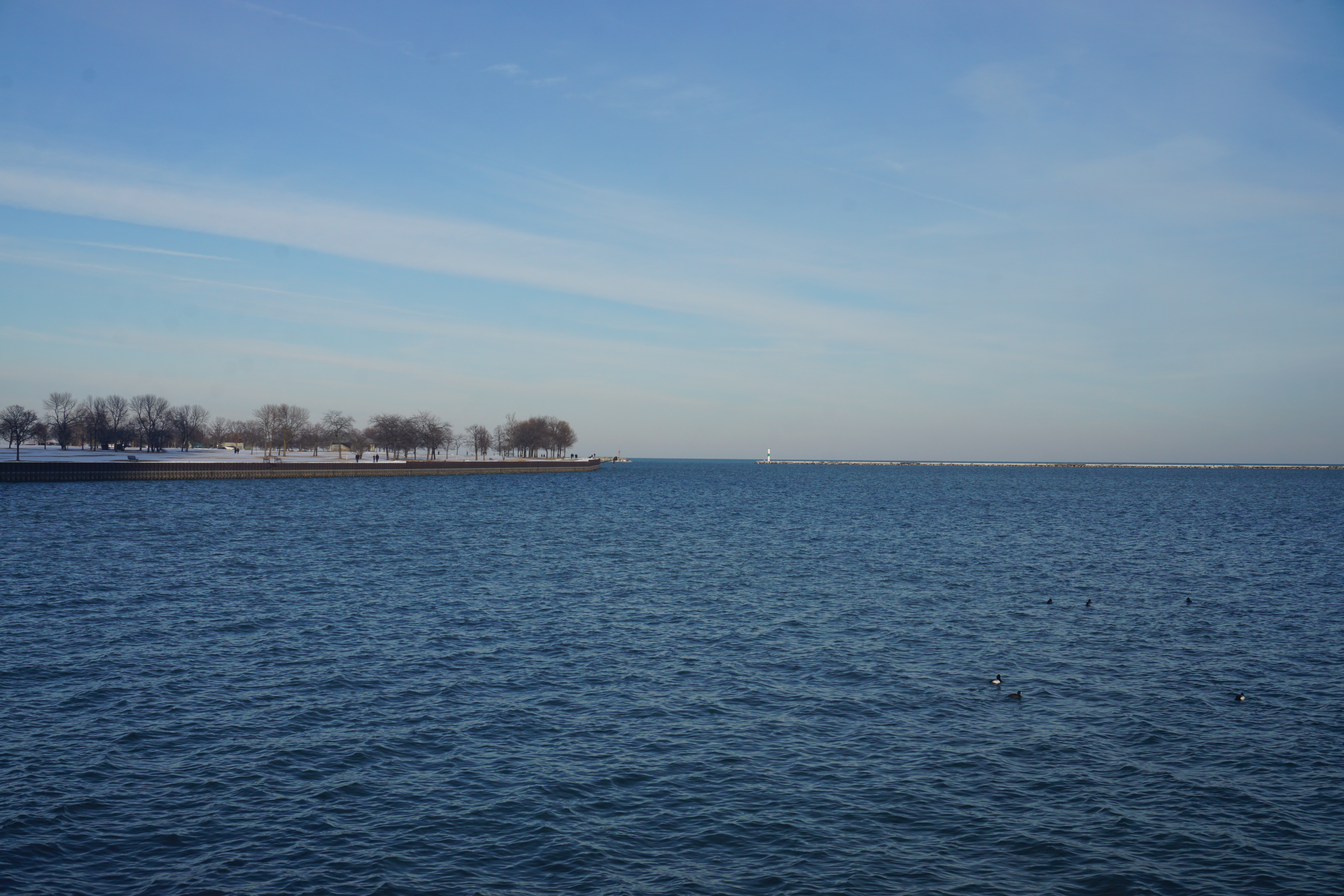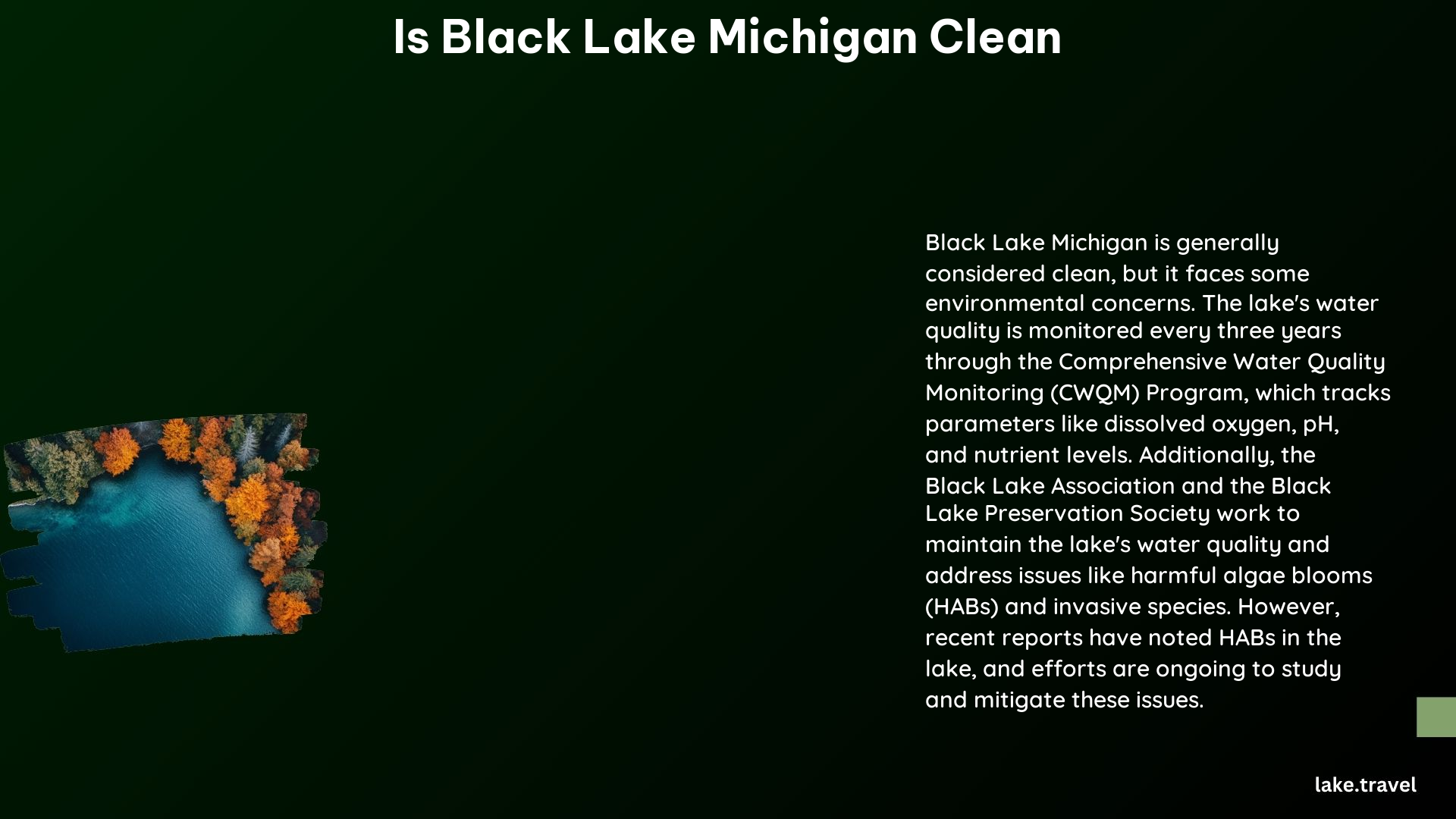Black Lake in Michigan is generally considered a clean and pristine lake, but it does face some environmental challenges. The water quality is regularly monitored, and efforts are made to address issues like harmful algae blooms and invasive species.
Water Quality Monitoring

Black Lake is monitored every three years through the Watershed Council’s Comprehensive Water Quality Monitoring (CWQM) Program. This program tracks various parameters, including:
- Dissolved oxygen
- pH
- Nitrate-nitrogen
- Total nitrogen
- Total phosphorus
- Chloride levels
Additionally, volunteers participate in the Watershed Council’s Volunteer Lake Monitoring (VLM) Program, which monitors water transparency, chlorophyll-a, and water temperature each summer.
Harmful Algae Blooms

There have been instances of harmful algae blooms in Black Lake. In 2020, the Health Department warned of such blooms and advised the public to report them to EGLE by calling 1-800-662-9278 or emailing [email protected].
Invasive Species
Invasive zebra mussels have been found in Black Lake. These mussels disrupt the natural nutrient cycle and food chain dynamics, affecting the lake’s ecosystem and fish populations.
Fertilizer Runoff and Microplastics
The Black Lake Association emphasizes the importance of eliminating soaps, fertilizers, and other chemicals near the lake to maintain water quality. Proper septic system maintenance is also crucial in preventing pollution.
Measures to Prevent Invasive Species and Harmful Algae Blooms
The Black Lake Association and the Tip of the Mitt Watershed Council work together to monitor and address environmental issues. The Association also encourages responsible practices among residents and visitors to prevent pollution and maintain the lake’s cleanliness.
Current Status of Water Quality Monitoring and Research
Black Lake is regularly monitored for various water quality parameters, and research is ongoing to address specific issues like invasive species and harmful algae blooms. The Black Lake Association and the Watershed Council collaborate to ensure the lake remains healthy and clean.
In conclusion, while Black Lake faces some environmental challenges, ongoing monitoring and research efforts, as well as community involvement, help maintain its cleanliness and protect its ecosystem.
References:
– Wikipedia – Black Lake (Michigan)
– Sturgeon for Tomorrow – Black Lake Watershed
– Cheboygan News – Health Department Warns of Harmful Algae Blooms in Black Lake
– Tip of the Mitt Watershed Council – Black Lake
– Black Lake Association
